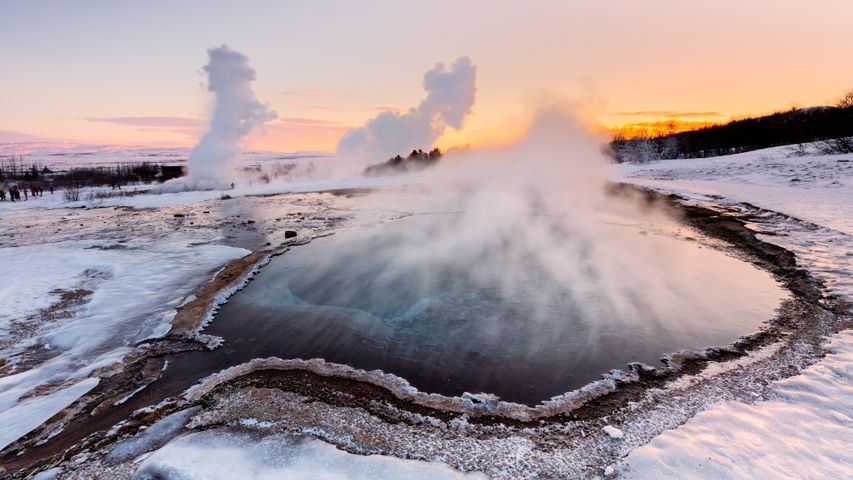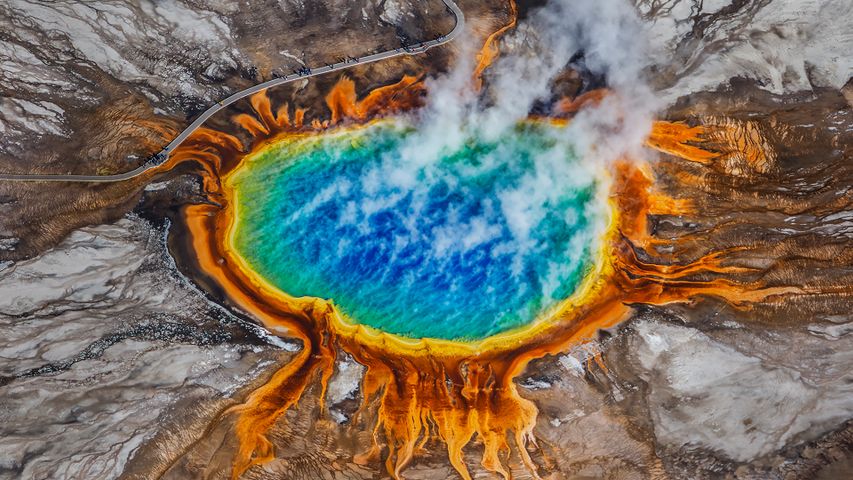Handicrafts of the Guna people of the Guna Yala archipelago, Panama
© Lars Schneider/Tandem Stills + Motio
These patterns tell a story
Is it possible for an article of clothing to express the essence of an entire people? Well, not usually, but for the Indigenous Guna people of Panama, the colorful handwoven textiles seen here may be an exception. Molas, which means 'clothing' in the Guna language, are traditionally displayed on both the front and back of women's blouses. Even today, many Guna women prefer to wear them instead of modern attire. The textiles often feature abstract geometric patterns, as well as images from nature such as turtles, flowers, birds, and fish. Guna women of yesteryear were known to paint their bodies with those same geometric patterns and designs, and by the late 1800s they had begun weaving them onto cloth instead of painting themselves. Today, the production of molas is still generally done by women, who use an intricate process called reverse appliqué, where as many as seven layers of fabric are sewn together to form a panel, which is then hand-cut to create the vibrant designs.
But the importance of molas to the Guna people runs deeper than mere fashion. Forced from Colombia by Spanish colonists in the 16th century, the Guna endured an arduous migration before settling in what's now known as Guna Yala, a semi-autonomous archipelago of coral islands in Panama. In the early 20th century, they again found themselves at odds with local authorities. The Panamanian government, in an attempt to westernize the Guna people, objected to their wearing of molas and other traditional garb. This resulted in an uprising in which the Guna finally won the political independence they enjoy today. To many Guna, the mola is not just a craft, but a symbol of their autonomy.
Related Images
Bing Today Images





 Bottle-cap mural made by Oscar Olivares in Guatire, Venezuela
Bottle-cap mural made by Oscar Olivares in Guatire, Venezuela
 Mona Vale Rockpool, Sydney, Australia
Mona Vale Rockpool, Sydney, Australia
 'The Spirit of Electricity' by Raoul Dufy, Museum of Modern Art, Paris, France
'The Spirit of Electricity' by Raoul Dufy, Museum of Modern Art, Paris, France
 A delta in the Venetian Lagoon, Italy
A delta in the Venetian Lagoon, Italy
 Paper flags strung over a street in San Miguel de Allende, Mexico
Paper flags strung over a street in San Miguel de Allende, Mexico
 Grand Prismatic Spring, Yellowstone National Park, Wyoming
Grand Prismatic Spring, Yellowstone National Park, Wyoming
 Desert bighorn sheep in Valley of Fire State Park, Nevada
Desert bighorn sheep in Valley of Fire State Park, Nevada
 Eucalyptus trees, Megalong Valley, Blue Mountains National Park, NSW, Australia
Eucalyptus trees, Megalong Valley, Blue Mountains National Park, NSW, Australia

